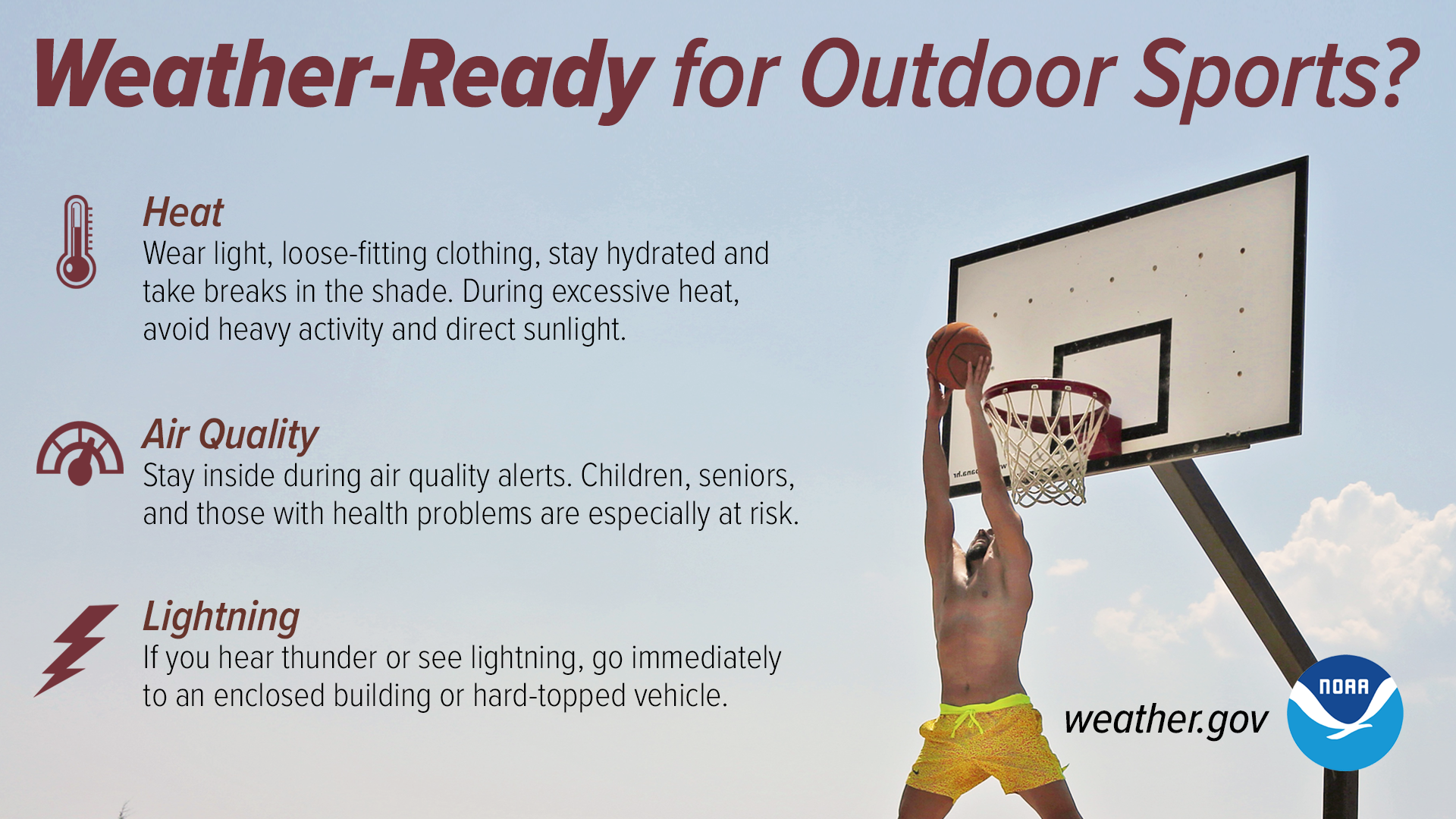Please help the NWS spread these messages on social media! Everyone is welcome to use the text and images provided below to help the NWS build a Weather-Ready Nation.
Facebook
During hot and humid weather, your body's ability to cool itself is challenged in ways you may not expect. When your body heats too rapidly, or when too much fluid or salt is lost through dehydration or sweating, you may experience a heat-related illness. Stay Weather-Ready by learning the symptoms of excessive heat exposure and the appropriate responses.
weather.gov/safety/heat-illness
X
During hot and humid weather, your body's ability to cool itself is challenged in ways you may not expect. Stay #WeatherReady by learning the symptoms of excessive heat exposure and the appropriate responses.
weather.gov/safety/heat-illness
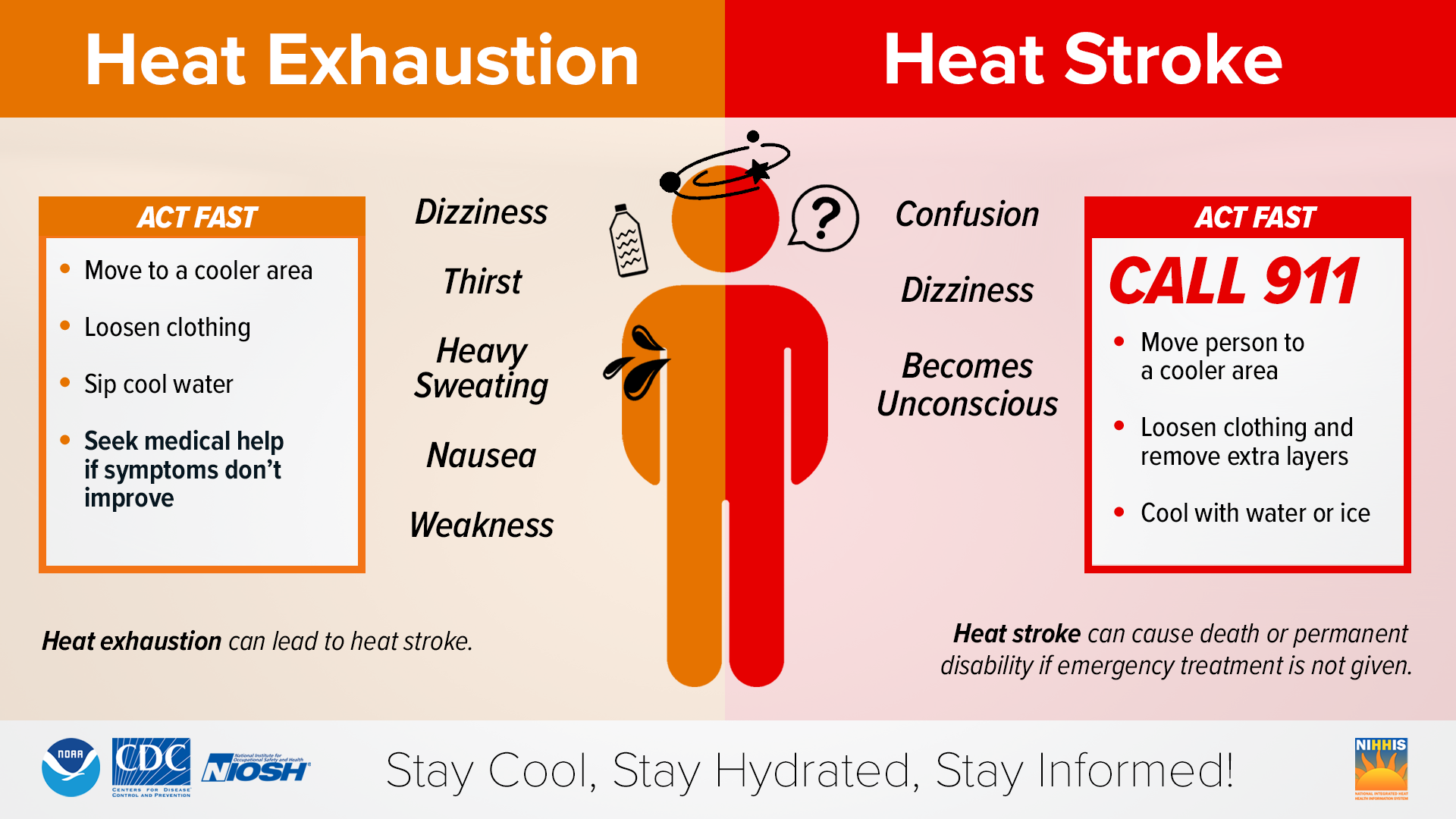
Facebook
Outdoor exercise from gardening to team sports can help keep you heart-healthy and less at risk to poor air quality. But before you go out, check the air quality forecast to ensure you aren't doing yourself more harm than good.
airnow.gov
X
Outdoor exercise from gardening to team sports can help keep you heart-healthy and less at risk to poor air quality. But before you go out, check the air quality forecast to ensure you aren't doing yourself more harm than good.
airnow.gov
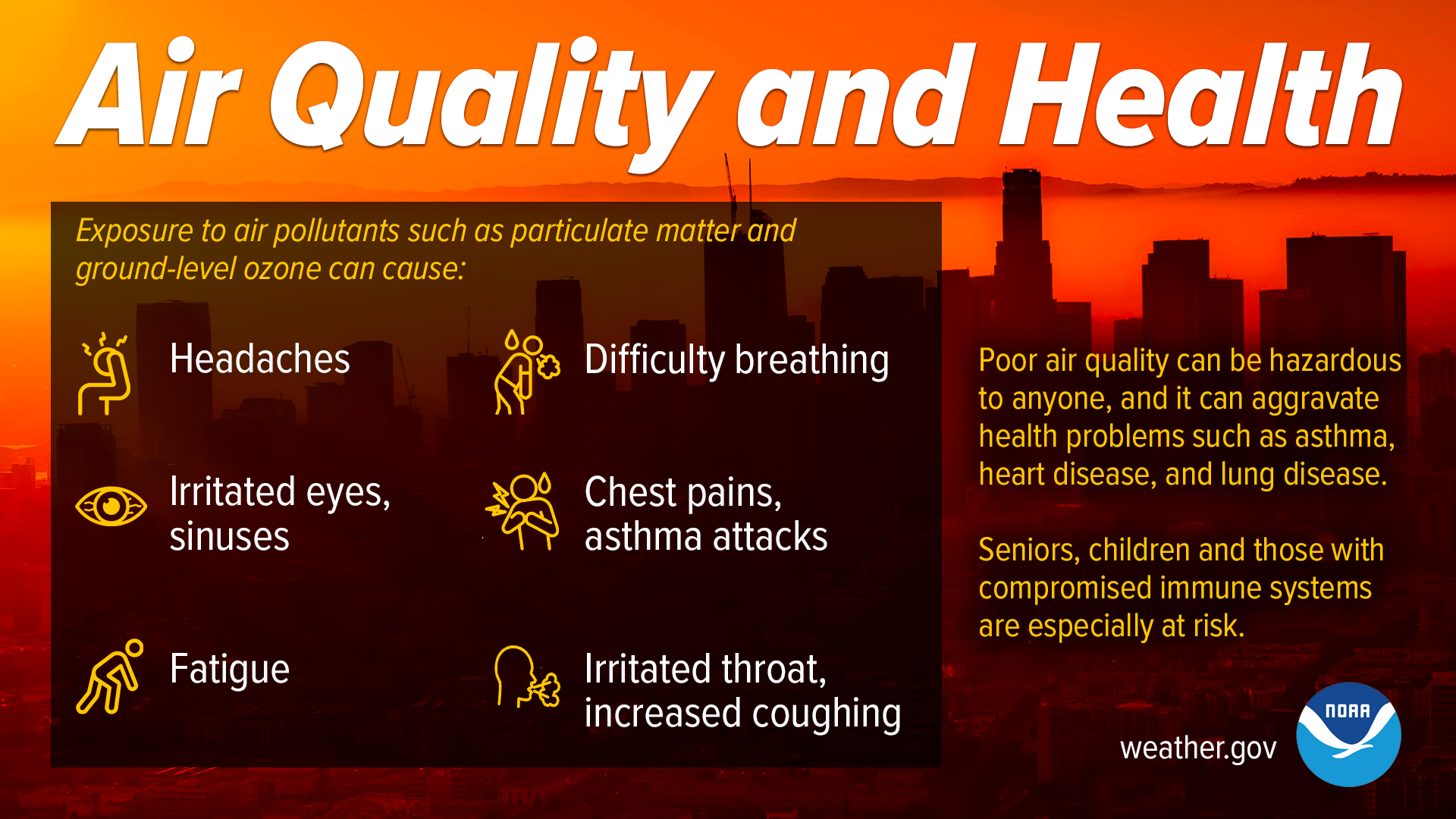
Facebook
Air quality is reported using the Air Quality Index (AQI). Do you know what these numbers and their corresponding levels mean? View the chart below to find out. To see the current air quality in your area, visit airnow.gov
X
Air quality is reported using the Air Quality Index (AQI). Do you know what these numbers and their corresponding levels mean? View the chart below to find out. To see the current air quality in your area, visit airnow.gov
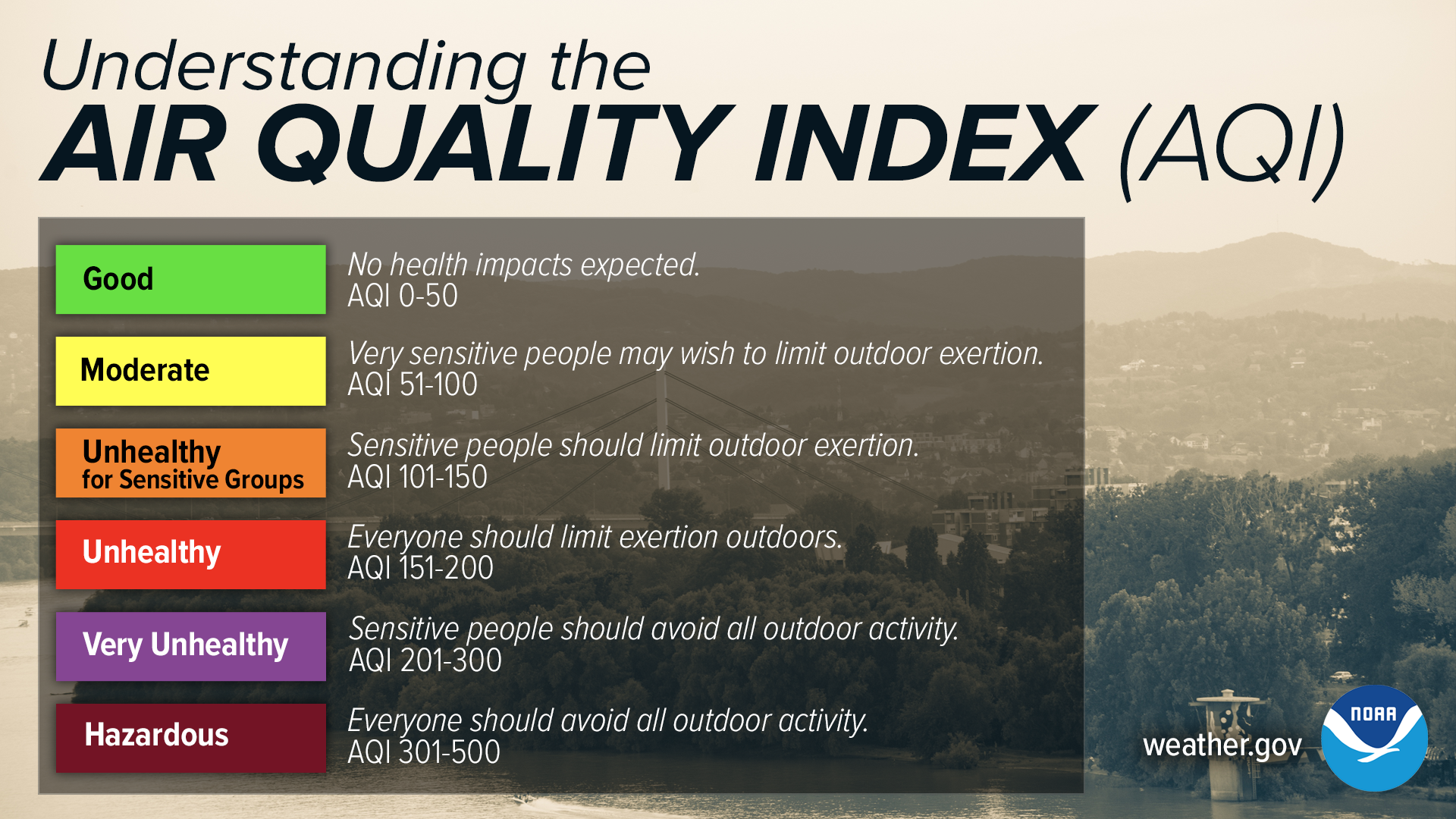
Facebook
A LOT can change with the weather between when you leave the shore and when you're out on the open water. Know before you go! Stay Weather-Ready by checking the forecast before enjoying any outdoor activity. weather.gov
X
A LOT can change with the weather between when you leave the shore and when you're out on the open water. Know before you go! Stay Weather-Ready by checking the forecast before enjoying any outdoor activity. weather.gov
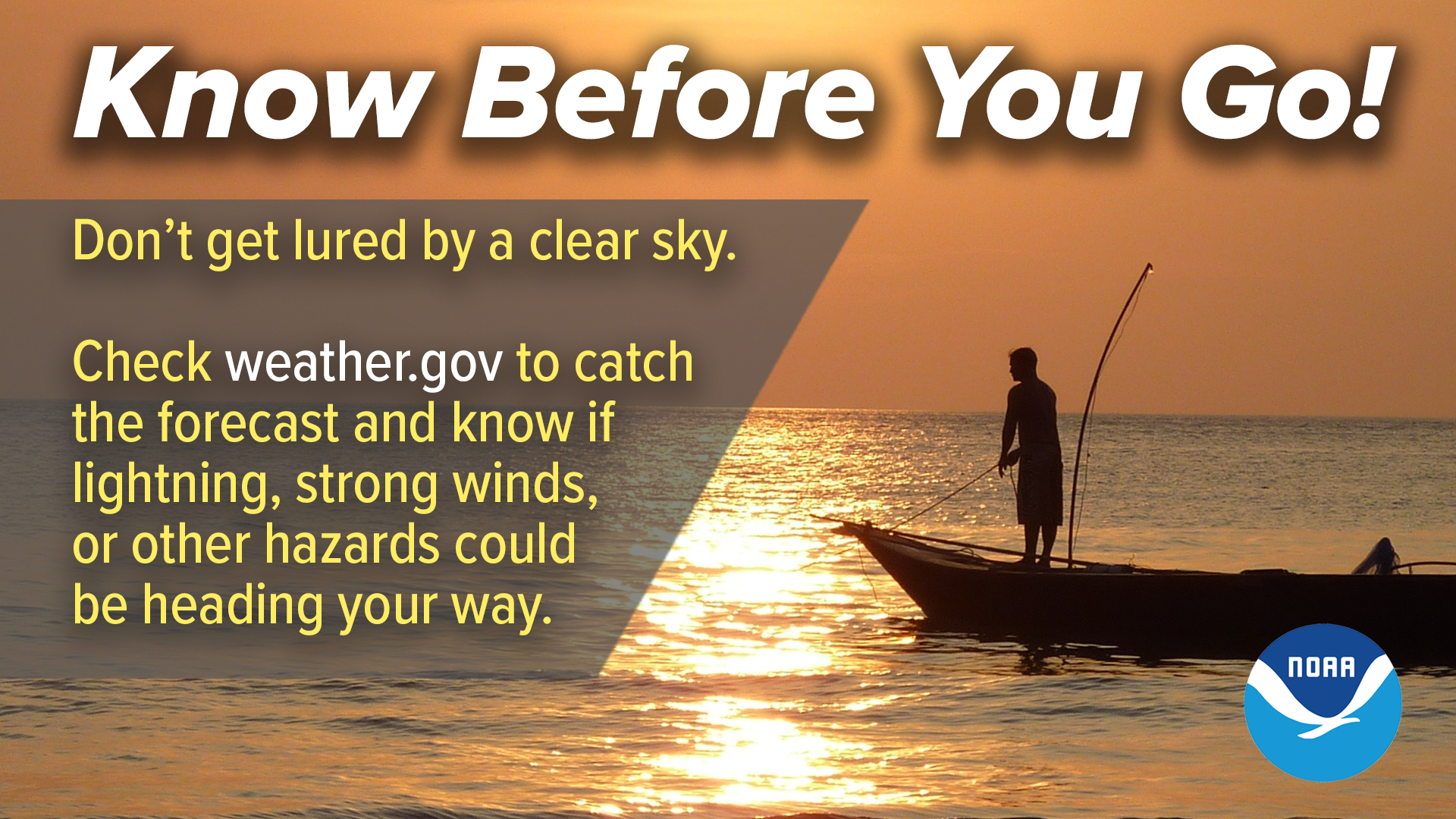
Facebook
We’ve all seen those days when a beautiful morning takes a nasty turn. Empower yourself and your friends by being Weather-Ready. Check the forecast before enjoying any outdoor activity. Know before you go! weather.gov
X
We’ve all seen those days when a beautiful morning takes a nasty turn. Empower yourself and your friends by being Weather-Ready. Check the forecast before enjoying any outdoor activity. Know before you go! weather.gov
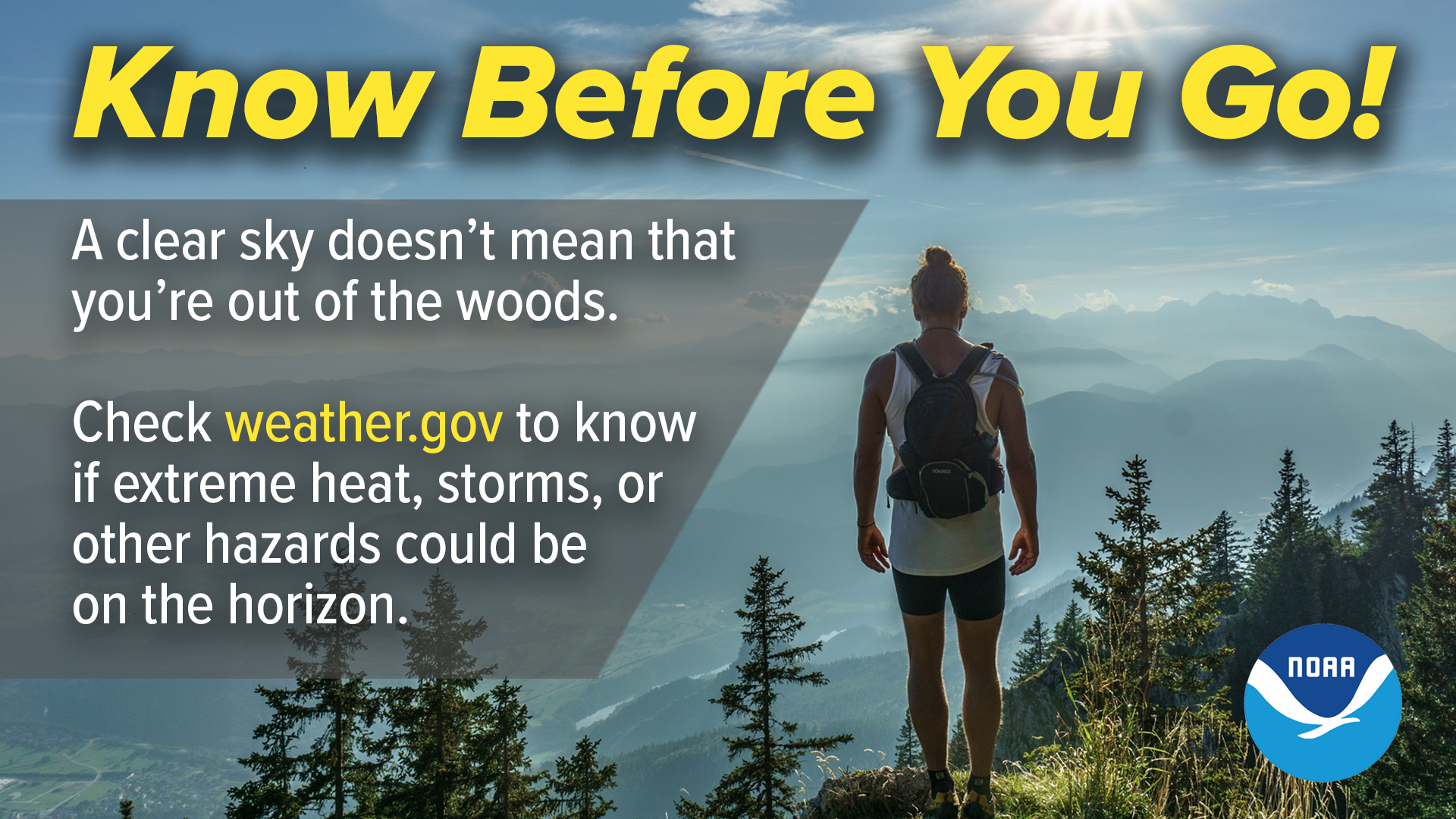
Facebook
Lightning strikes can result in death or serious injury. If you hear thunder or see lightning, take shelter in an enclosed building or a hard-topped vehicle with the windows up. weather.gov
X
Lightning strikes can result in death or serious injury. If you hear thunder or see lightning, take shelter in an enclosed building or a hard-topped vehicle with the windows up. weather.gov
#WeatherReady
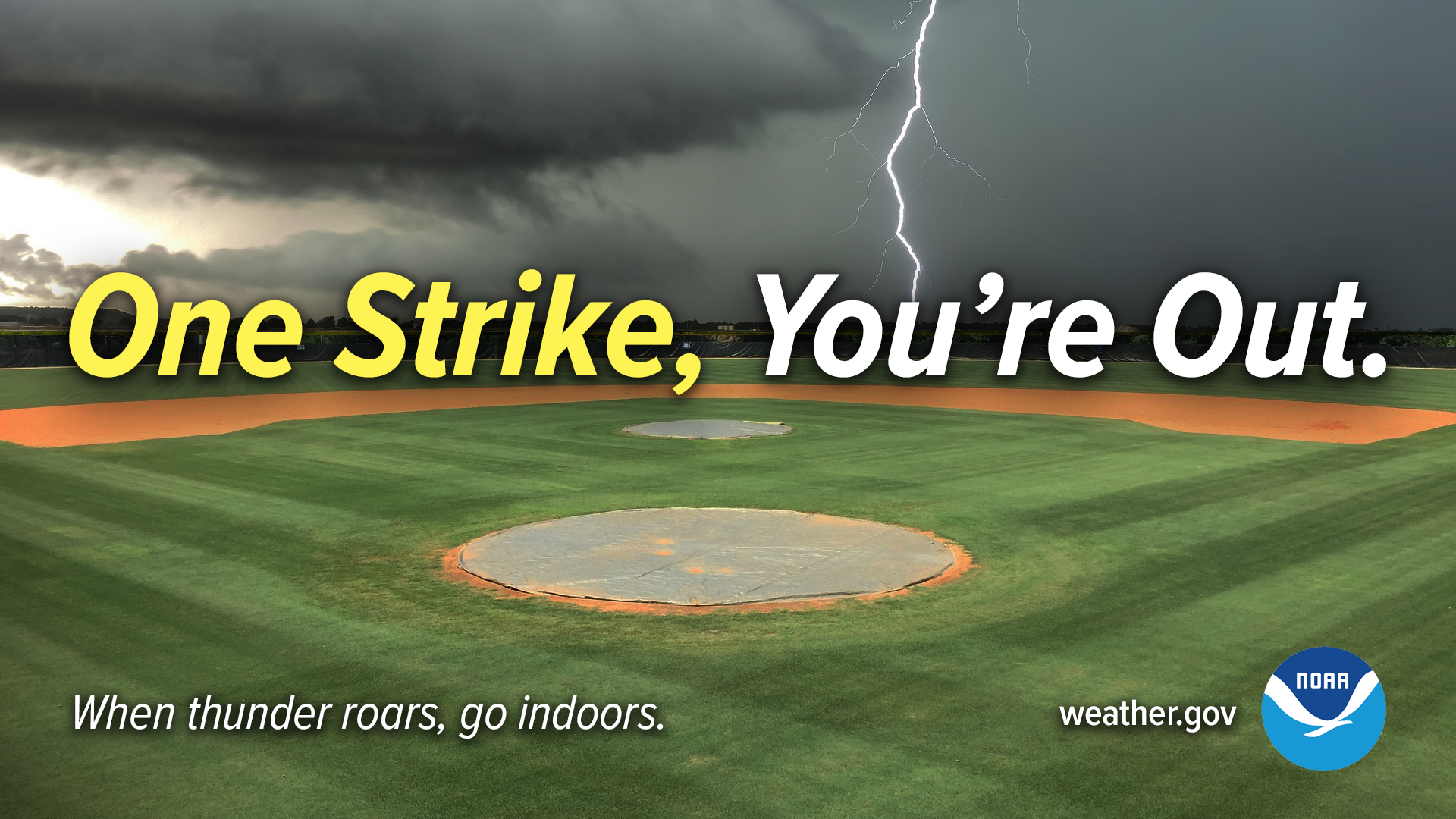
Facebook
Each year in the United States, thunderstorms produce 20-25 million lightning flashes that strike the ground, killing an average of 20+ people and injuring hundreds more - often in devastating and permanent ways. weather.gov
X
Each year in the United States, thunderstorms produce 20-25 million lightning flashes that strike the ground, killing an average of 20+ people and injuring hundreds more - often in devastating and permanent ways. weather.gov
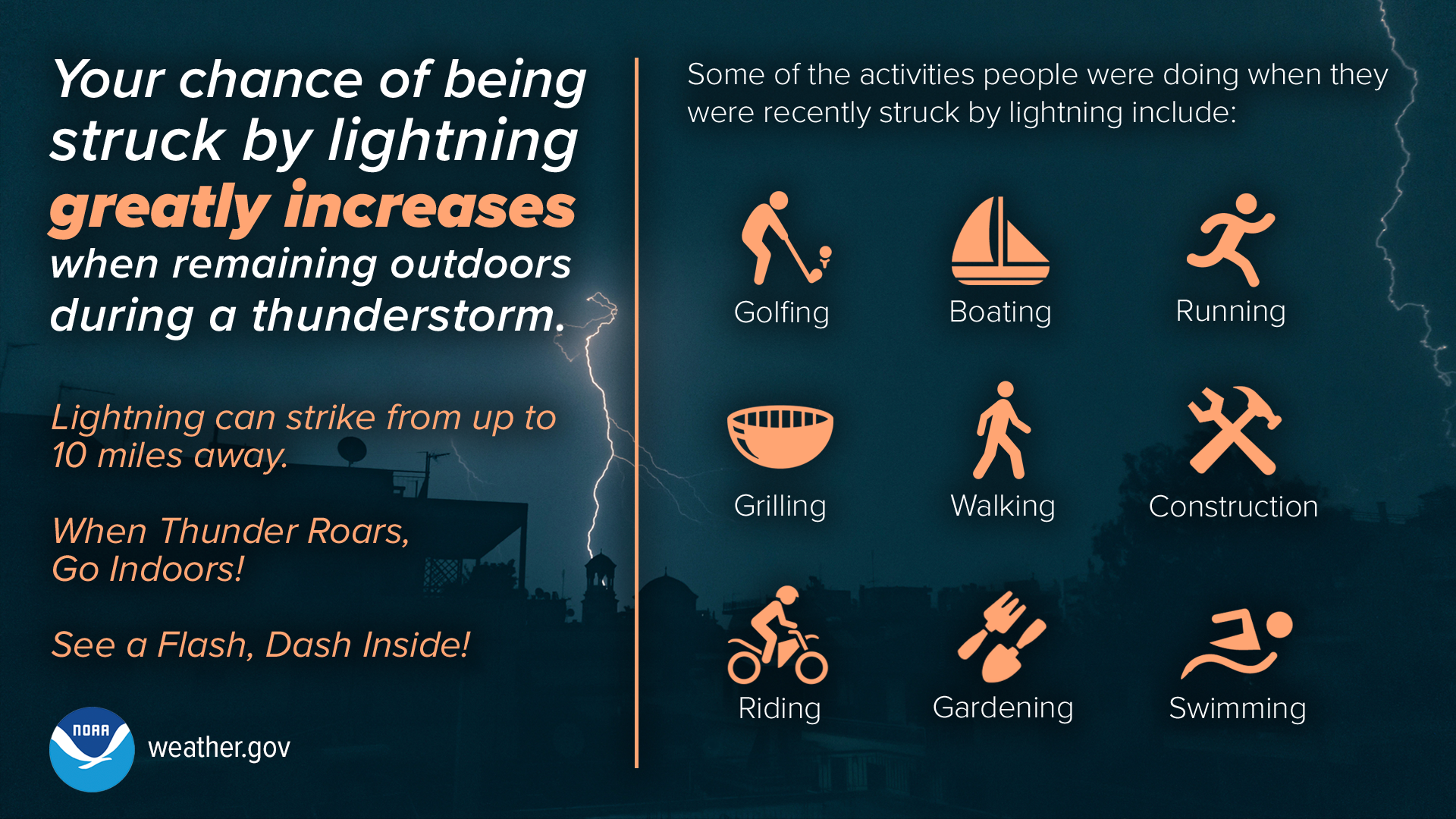
Facebook
You’re ready for the beach, but are you Weather-Ready? Be prepared for, and know how to react to, weather and water hazards such as rip currents & dangerous waves, excessive heat, and lightning. weather.gov
X
You’re ready for the beach, but are you #WeatherReady? Be prepared for, and know how to react to, weather and water hazards such as rip currents & dangerous waves, excessive heat, and lightning. weather.gov
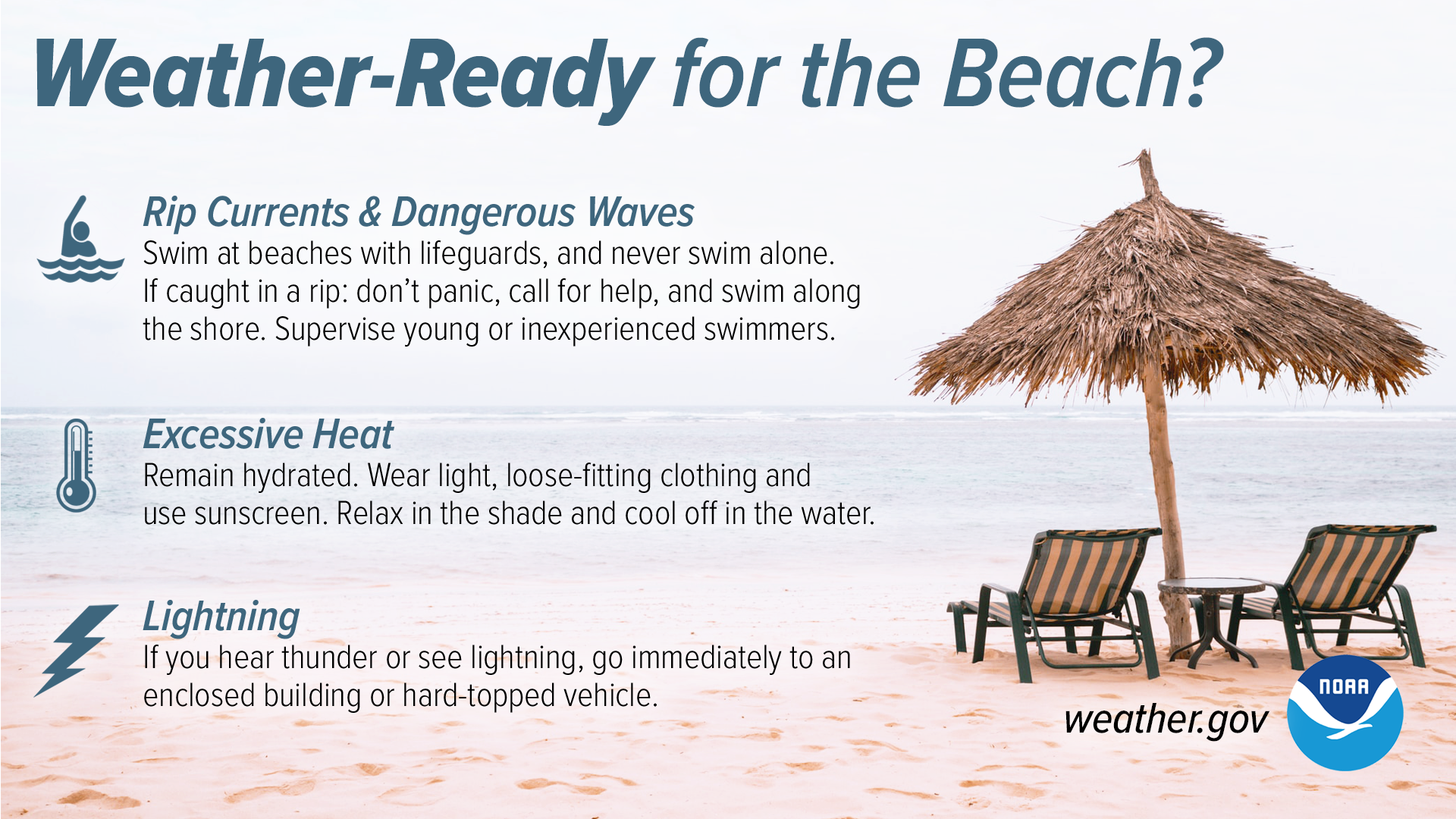
Facebook
You’re ready for the great outdoors, but are you Weather-Ready? Be prepared for, and know how to react to, weather and water hazards such as flash flooding, excessive heat, and lightning.
As always, knowing the forecast is critical to preparation too. Visit weather.gov.
X
You’re ready for the great outdoors, but are you #WeatherReady? Be prepared for, and know how to react to, weather and water hazards such as flash flooding, excessive heat, and lightning.
As always, knowing the forecast is critical to preparation too. Visit weather.gov.
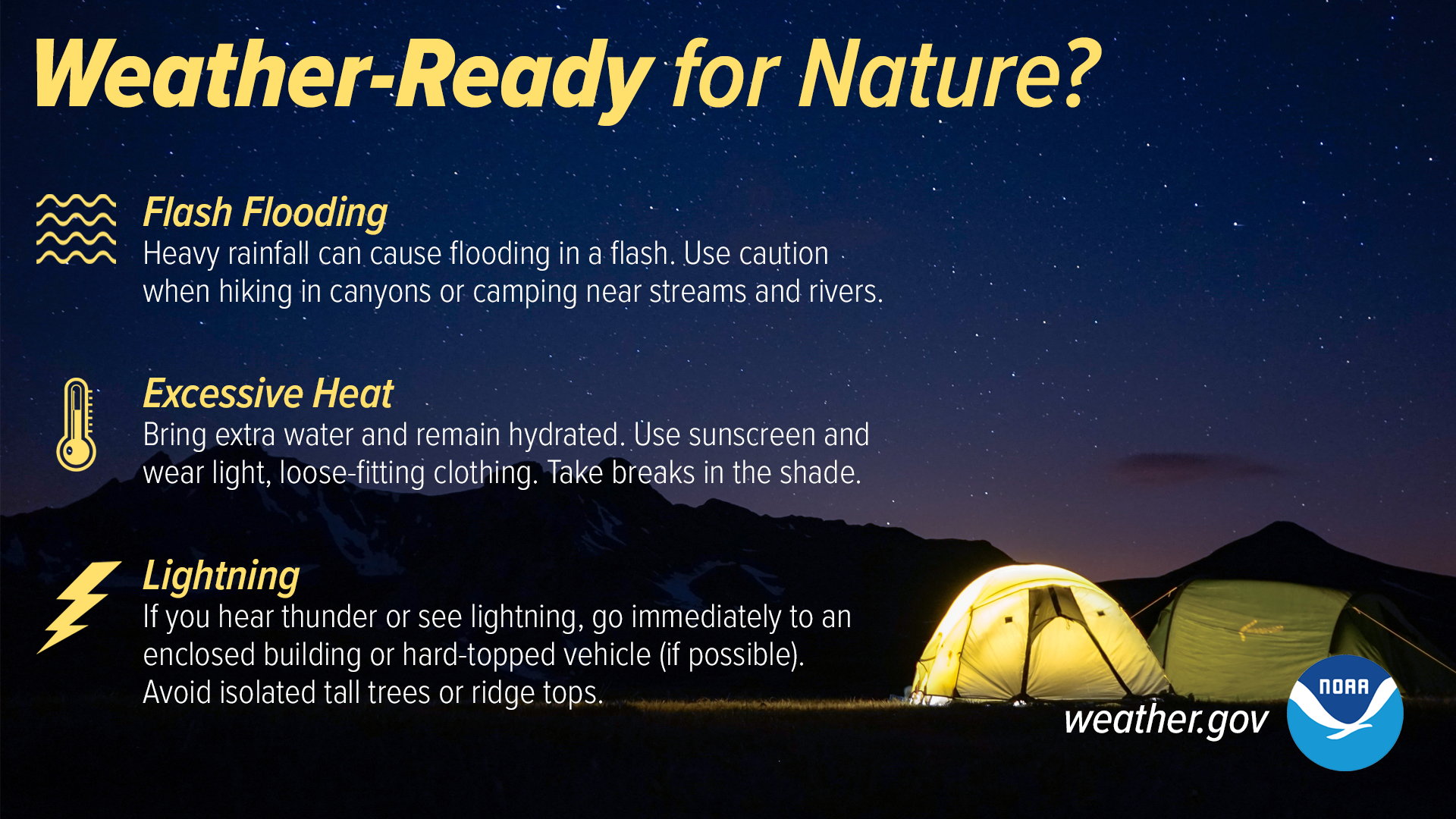
Facebook
You’re ready for time on the water, but are you Weather-Ready? Be prepared for, and know how to react to, weather hazards such as strong winds, lightning, and fog. weather.gov
X
You’re ready for time on the water, but are you #WeatherReady? Be prepared for, and know how to react to, weather hazards such as strong winds, lightning, and fog. weather.gov
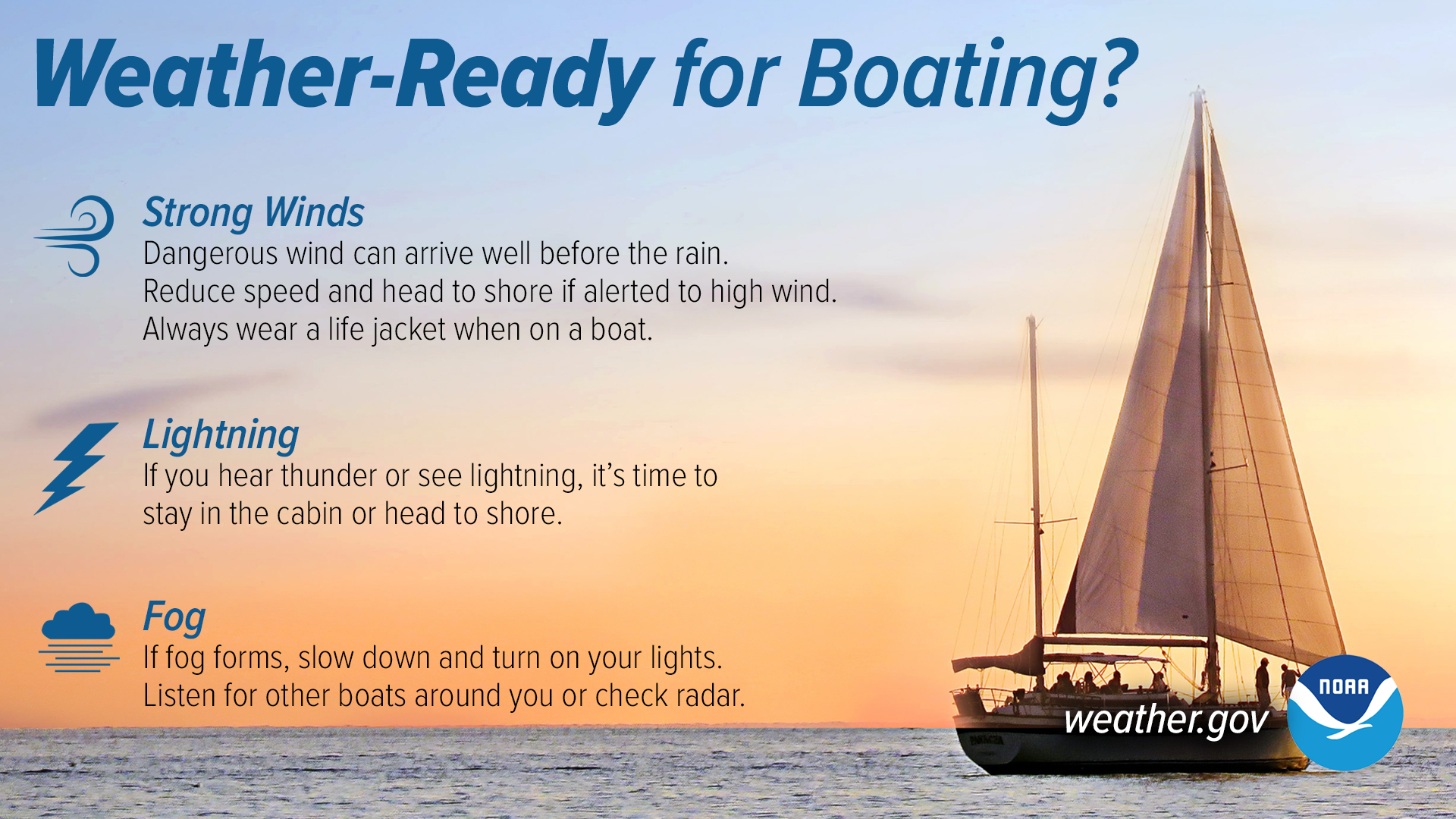
Facebook
You’re ready to play sports, but are you Weather-Ready? Be prepared for, and know how to react to, weather hazards such as heat, air quality, and lightning. weather.gov
X
You’re ready to play sports, but are you #WeatherReady? Be prepared for, and know how to react to, weather hazards such as heat, air quality, and lightning. weather.gov
